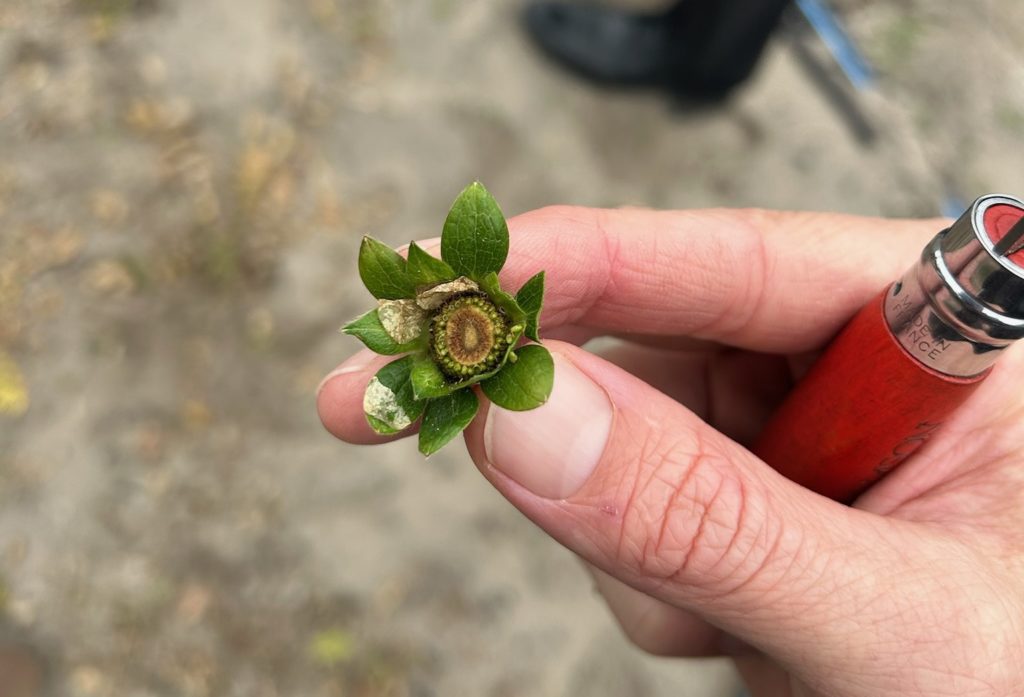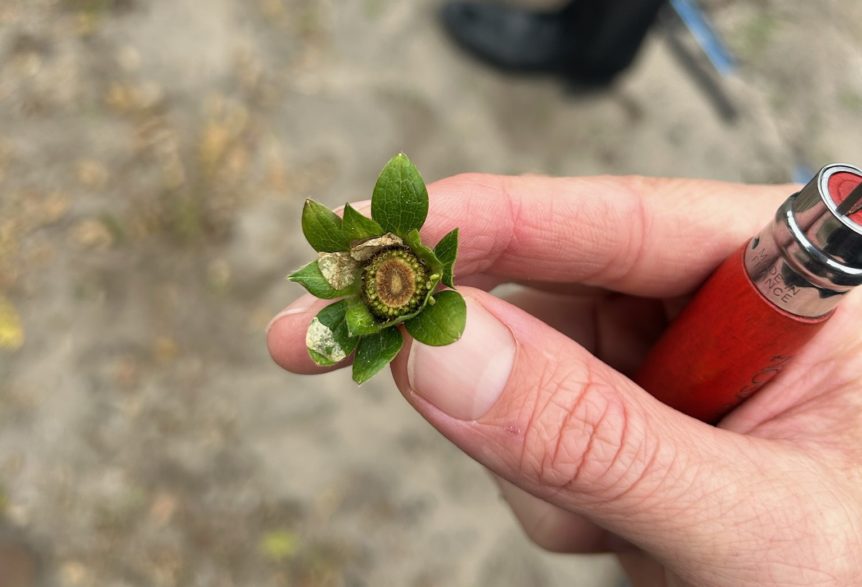
Clemson Extension agents provide updates in The South Carolina Grower this week about the status of various crops being produced throughout the state.
Coastal Region
Zack Snipes
- We had a week of warm weather after a cold snap.
- I have seen an uptick in black rot in brassicas. Unfortunately, there isn’t anything anyone can do, conventionally or organically. The pathogen that causes black rot is a bacterium, and populations explode when there is damaged tissue (from the cold), followed by warmer, humid weather (last week). Using clean transplants or seed and rotation away from fields with brassicas can help manage this pathogen.
- Uncovered strawberries saw some damage to leaves but nothing to worry about too much. Dead blossoms, leaf tissue and green berries are havens for gray mold. Get out in the fields and pull all dead, diseased or damaged tissue. Let’s stay ahead of diseases this season.
- I’ve gotten several calls about the timing of strawberries. It is too early to push them to fruit right now. The plants are still small, and we still have a good bit of winter ahead of us (I think). Losing blossoms this time of year is normal and probably helps the plant develop into a more robust plant going into the production season.
Midlands
Rob Last
- Crops in the area are looking good after the freeze.
- Some strawberry crops have damaged flowers from the freeze event. It is advisable to remove those flowers promptly to help with disease management later in the season.
- Keep scouting crops for any pest and disease buildup.
- Neopestalotiopsis has been confirmed in Lexington County. Symptoms of the disease can easily be confused with foliar leaf lesions of gnomonia and anthracnose. If in doubt, a sample can be sent to the Plant Pest Diagnostic clinic or consult with your local agent.
- Brassicas and leafy greens continue to look good.
- Onions show some leaf scorch from the cold weather to the older leaves but will grow out of any damage.
- The Midlands Vegetable Grower Meeting is scheduled for Feb. 7.
Sarah Scott
- On the Ridge, we are busy pruning peach trees as well as planting new orchards. Watch planting depth and be sure to keep the graft union above the soil line to prevent issues down the road.
- Crews have also been doing some orchard floor management in bearing orchards. We like to treat row middles 6-to-8 weeks before bloom with a 2,4-D amine. Depending on whether you have perennial grass plantings or native, broadleaf mix, you can add Stinger (perennial grass) or Rimsulfuron/Glyphosate (native) for more effective control. If using Gramoxone, remember that you need to have the required training and certificate for purchase or use of the product. The training is good for three years and must be re-taken at the end of each cycle.
Upstate
Andy Rollins
- Upstate strawberry plants took some major cold weather last weekend as cold as 9 degrees (Fahrenheit). I expect to see crown damage, especially where plants were not covered with row covers as recommended. Thankfully, rarely is crown damage from cold the death of the plant, although some loss of production would be expected.
- I visited two farms last week that have bigger problems than cold. One is confirmed neopestalotiopsis in plug Camarosa, not Rubyjune. One is confirmed Phytophthora, primarily, but some crown damage where neopestalotiopsis is suspected but not confirmed. The first major issue in the Upstate was confirmed as Anthracnose crown rot (Colletoctricum gleosporoides). There are huge differences between two farms with plants from the same plant source on the same truck. One farm dipped in Switch before planting. The other did not. Dipping with Switch is fully labeled and really not that difficult to do. I would highly recommend all farms in the Upstate do this next year regardless of the look of the plants you get. If they look really bad, it would probably be best to leave them at the nursery if you can view them beforehand. Source plant cleanliness is of the most importance, and early detection and treatment is vital to our continued success growing strawberries.










